When looking around the Belgian Pro League and picking out the most talented wide players at the moment; names that come to mind include Noa Lang at Club Brugge, Junya Ito at KRC Genk, and Aron Dønnum at Standard Liège. One name not commonly mentioned is Nikola Storm at KV Mechelen. At 27, some may consider Storm a late bloomer in Belgian Pro League terms, with most players having their breakthrough seasons at much younger ages. So far this season, Storm has been Mechelen’s biggest goal contributor, with 14 goals and 5 assists to his name. He has so far doubled his goal tally from last season while contributing one more assist as well.
This tactical analysis and scout report will look at Nikola Storm’s strengths, as well as look at some weaknesses in his game.
Positioning overview
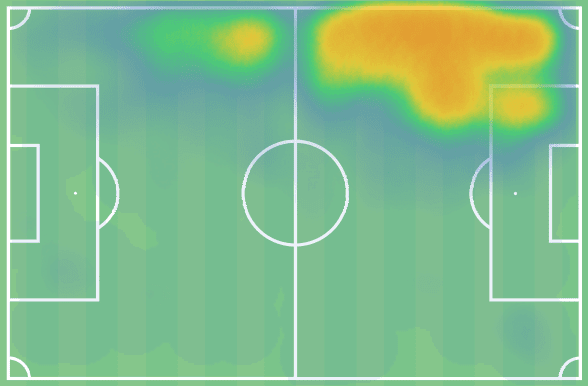
As Nikola Storm’s heat map from this season shows, he very much likes to operate on the left side of the attack, allowing him to cut inside on his favoured right foot and send shots at goal. Wouter Vrancken favours a 4-2-3-1 formation at Mechelen, so Storm will operate on the left of the three attacking midfielders sitting behind the striker. He is also active in contributing defensively, with the winger also dropping past the halfway line to help in defensive phases when Mechelen are not in possession.
Clinical ability in front of goal
With 14 goals to his name so far this season, Nikola Storm has already doubled his goal tally from last season. Storm is currently averaging 2.33 shots per 90 this season, with 44.7% of them being on target. Though these numbers may seem low, he is outperforming all of Mechelen’s other attackers on shots per 90 this season (Mrabti 1.3; Cuypers 1.76; Shved 2.07; Hairemans 1.61), while only Cuypers and Mrabti have a higher shots on target percentage. This clinical ability in front of goal has helped to guide Mechelen up the table, with the club currently sitting in the European playoff places, only six points off the Championship playoff spots, at the time of writing.
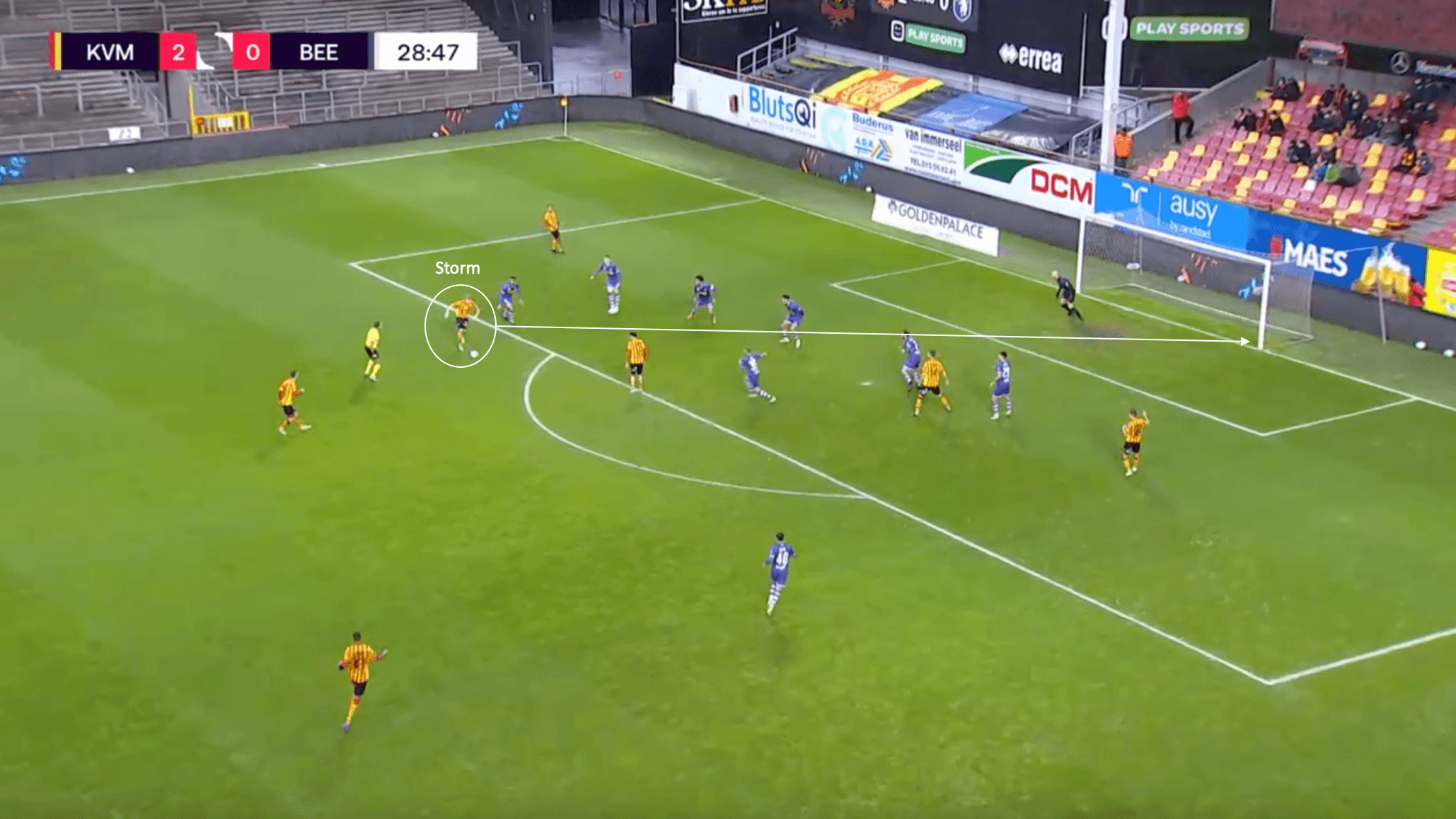
The phase of play above shows exactly the type of finishing that Nikola Storm excels at. Storm received the ball out wide near the edge of the 18-yard box and proceeded to cut inside and drive towards the centre to find some space. He was given the time and space by the Beerschot defence, which allowed him to place a shot perfectly into the bottom right corner of the Beerschot goal. This is a trademark Nikola Storm finish, something he has demonstrated multiple times so far this season.
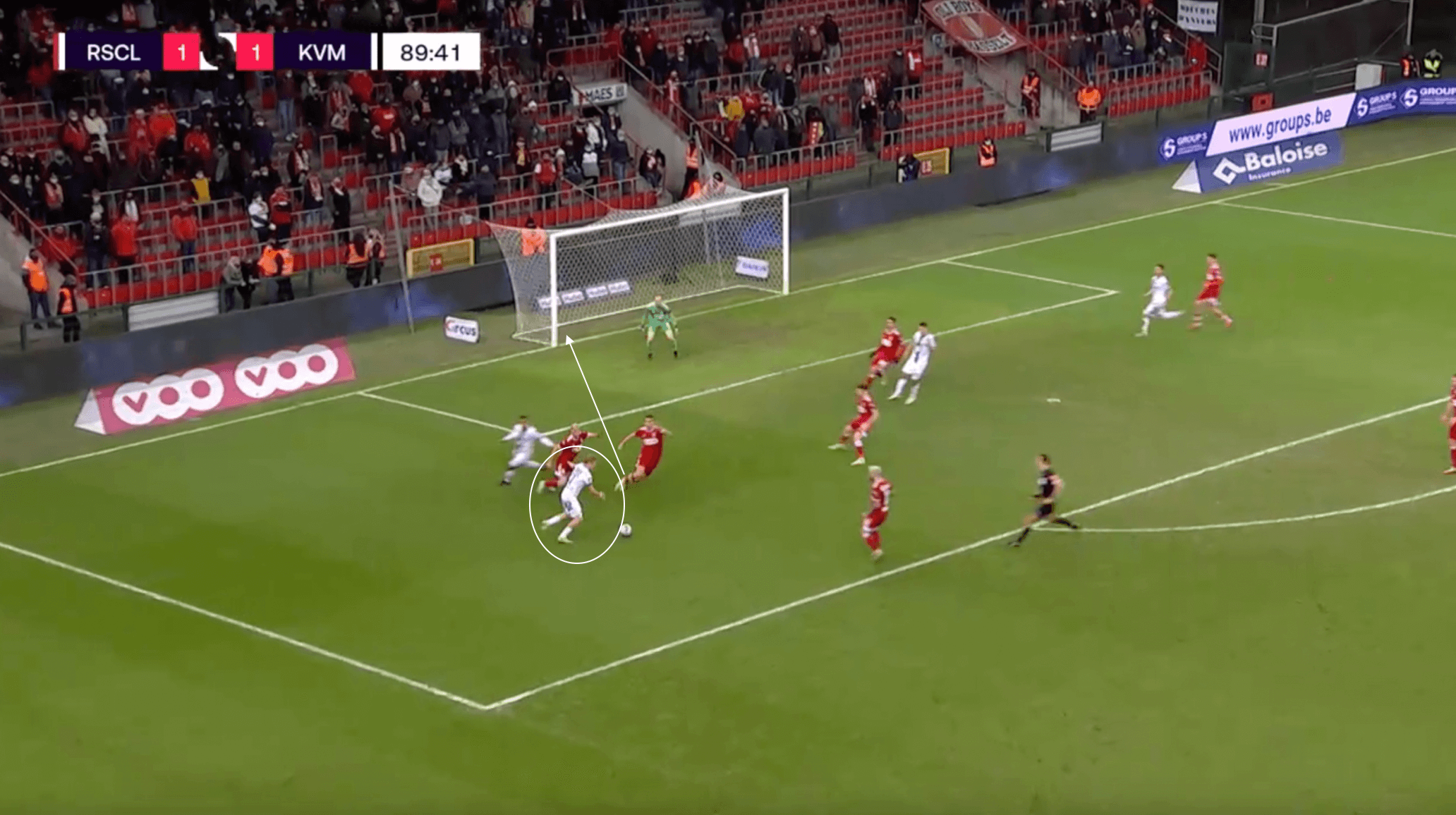
The image above shows this trademark Storm finishing in action again — this time, however, from inside the box and from a much tighter angle with defenders closing him down. In the phase of play above, Storm once again receives possession from a wider position before cutting in on his right and driving inside. In this situation, most players may aim to curl the shot in at the far post. Storm decides to instead go for the tighter angle. With two Standard defenders closing him down, Storm is able to fire a shot through one of the defenders’ legs, catching out the goalkeeper at the near post. What looked like nothing would result turned into a clinical finish for Nikola Storm.
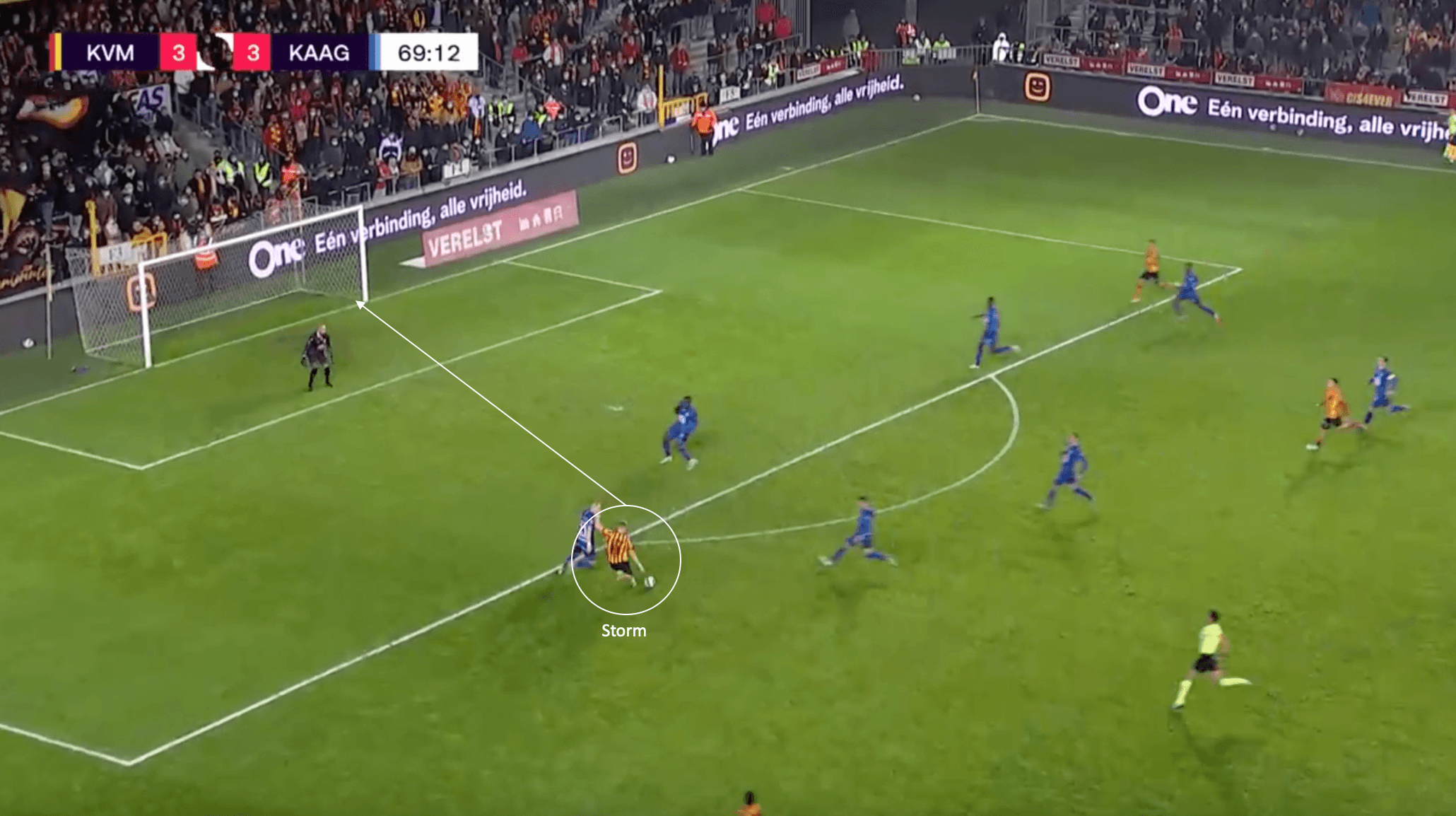
This goal against Gent probably illustrates best how deadly Storm’s right foot can be. Once again, Storm received possession from a wider position before cutting inside onto his right foot and firing a first time curling shot into the far corner. The Gent defender played this almost perfectly too, staying tight to Storm and not giving him much space. However, the clinical first-time finishing of Nikola Storm prevailed. Without a doubt, Nikola Storm’s strongest attribute is his clinical finishing ability.
Ability to create chances for teammates
While his clinical ability in front of goal is undoubtedly Nikola Storm’s greatest strength, he also can create chances for his teammates, as illustrated by the 5 assists he has this season so far. Whether it is by using his above-average dribbling ability or his tendency to get involved in link-up play, Storm is always involved whenever a goalscoring chance arises for Mechelen.
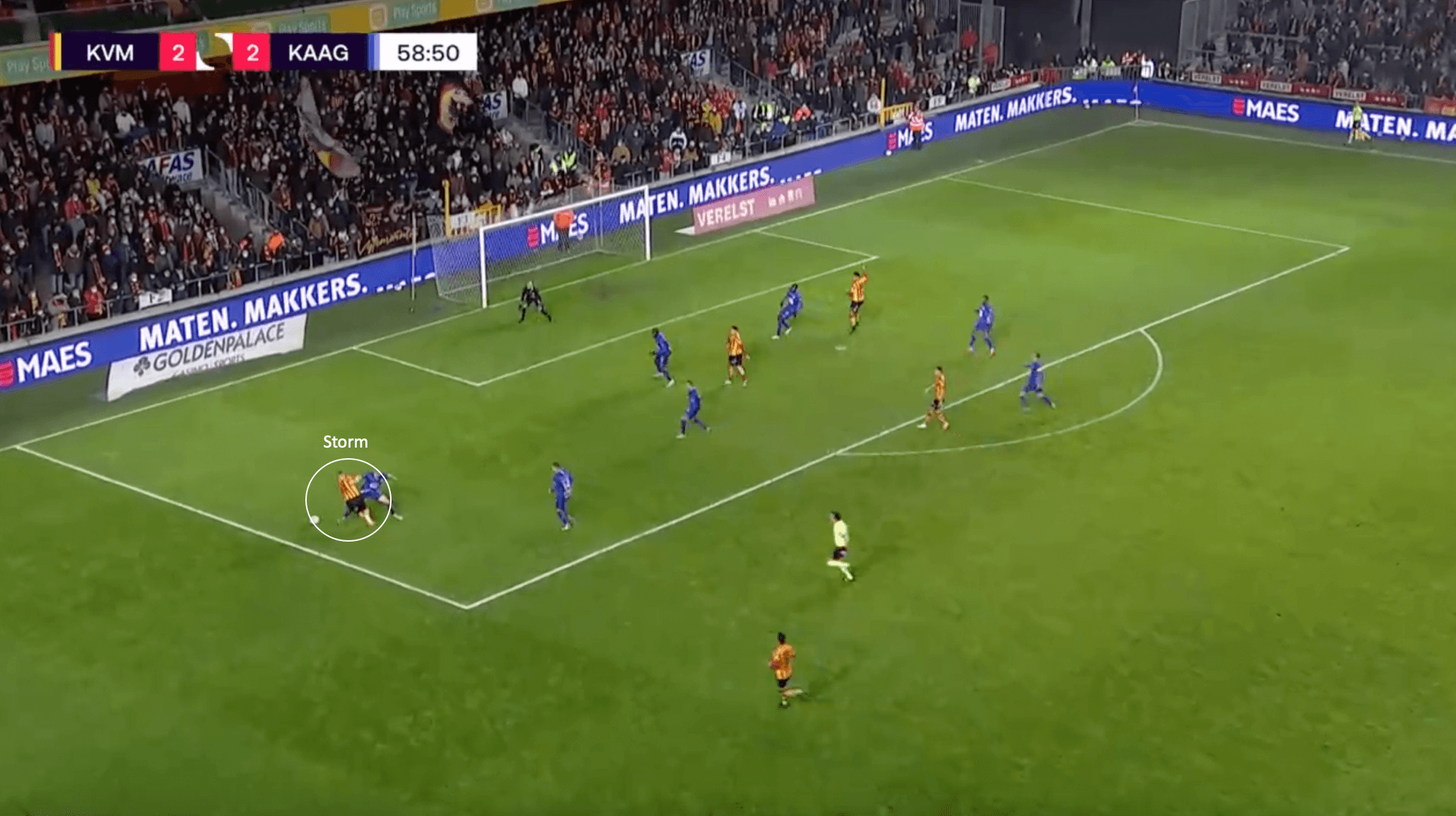
While he does create chances for his teammates for his side directly, he can also create chances indirectly with his dribbling ability. In the phase of play above against Gent, Storm is in possession and driving into the 18-yard box. He is 1v1 against the Gent defender, and decides to do a step-over, with him shifting the ball to his left foot. This quick movement baits the defender into stepping in, taking down Storm and giving up a penalty. Due to Storm’s quick feet and agile dribbling, Mechelen gets a penalty, which they convert.
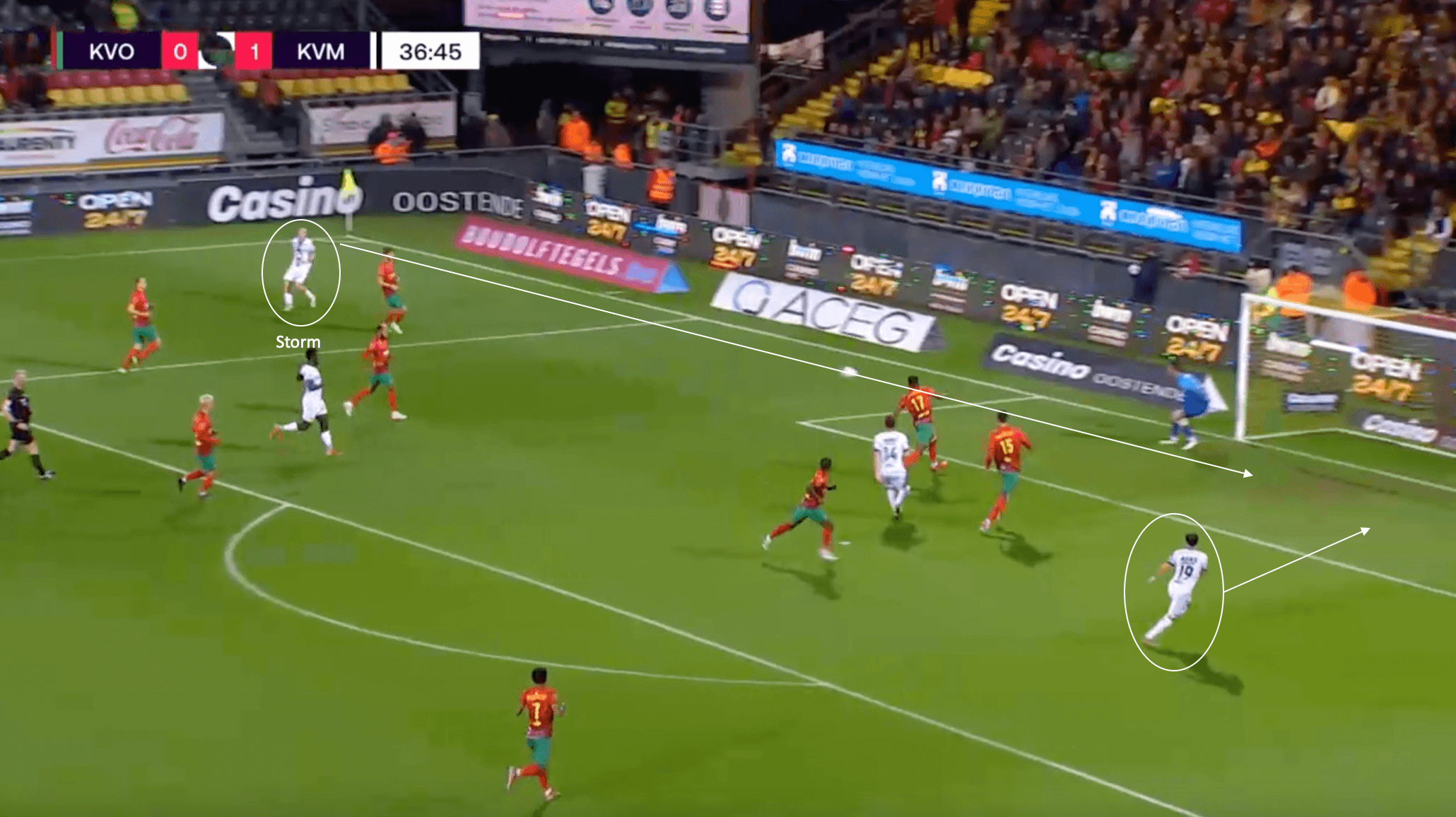
It is not just his dribbling ability with which Storm creates chances for his teammates. With Storm being deployed as one of the wide attacking midfielders in a 4-2-3-1 formation, he naturally operates in a wide position when he is not cutting inside to shoot. In the phase of play above against K.V. Oostende, Storm drives towards the byline before sending in a ball across the 18-yard box to his unmarked teammate. This perfect cross results in a goal for Mechelen, with his teammate tapping into an empty net.
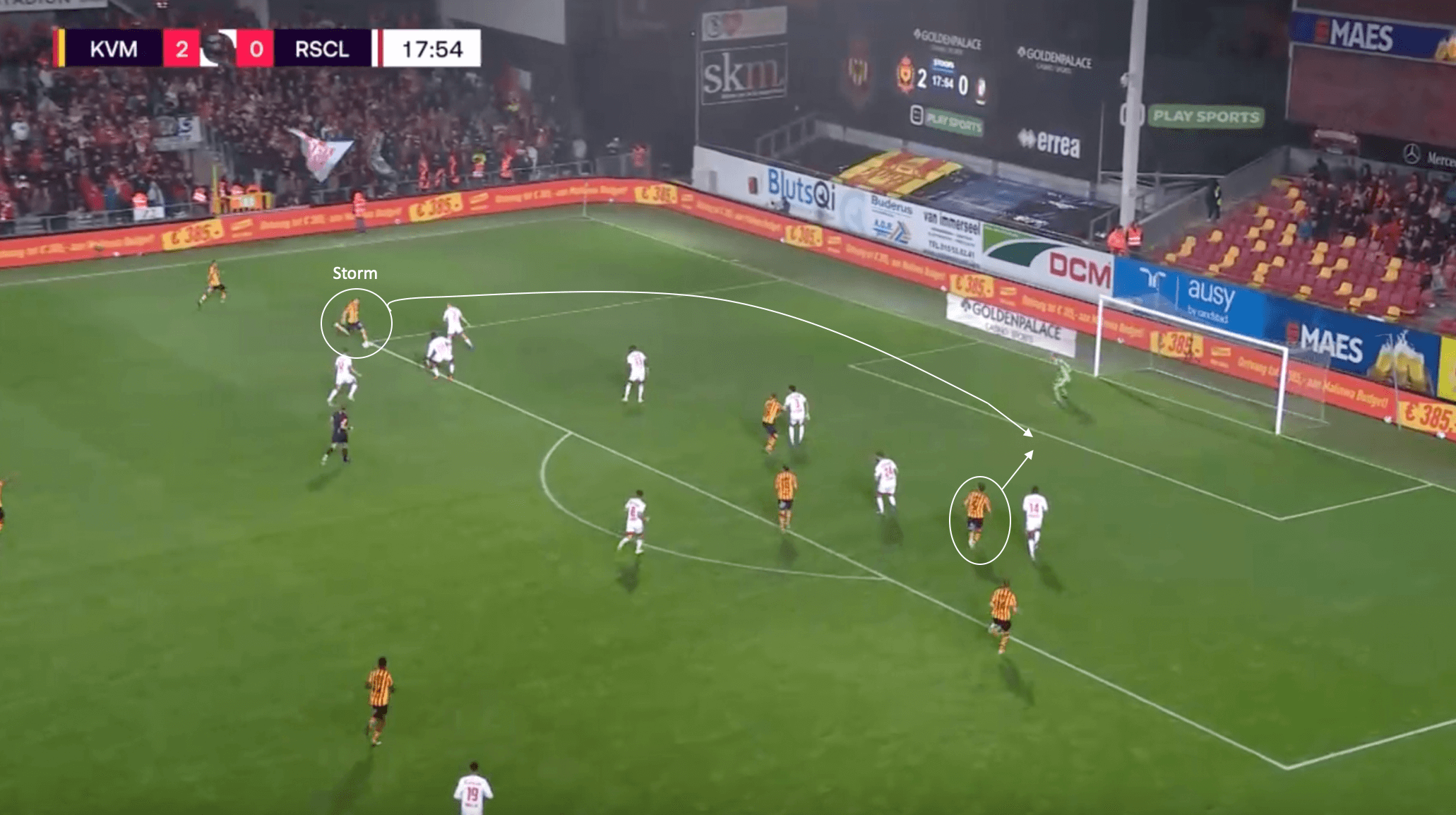
In the phase of play above against Standard Liège, Storm once again illustrates his ability to send crosses into the box and pick out teammates. The Mechelen fullback is making an overlapping run past Storm, allowing him some time and space before being closed down by the Standard defenders. He notices his forward making a run in between the centre backs and plays a perfect outside the foot pass right onto his teammates head. The forward makes good contact and scores, giving Mechelen a three-goal lead.
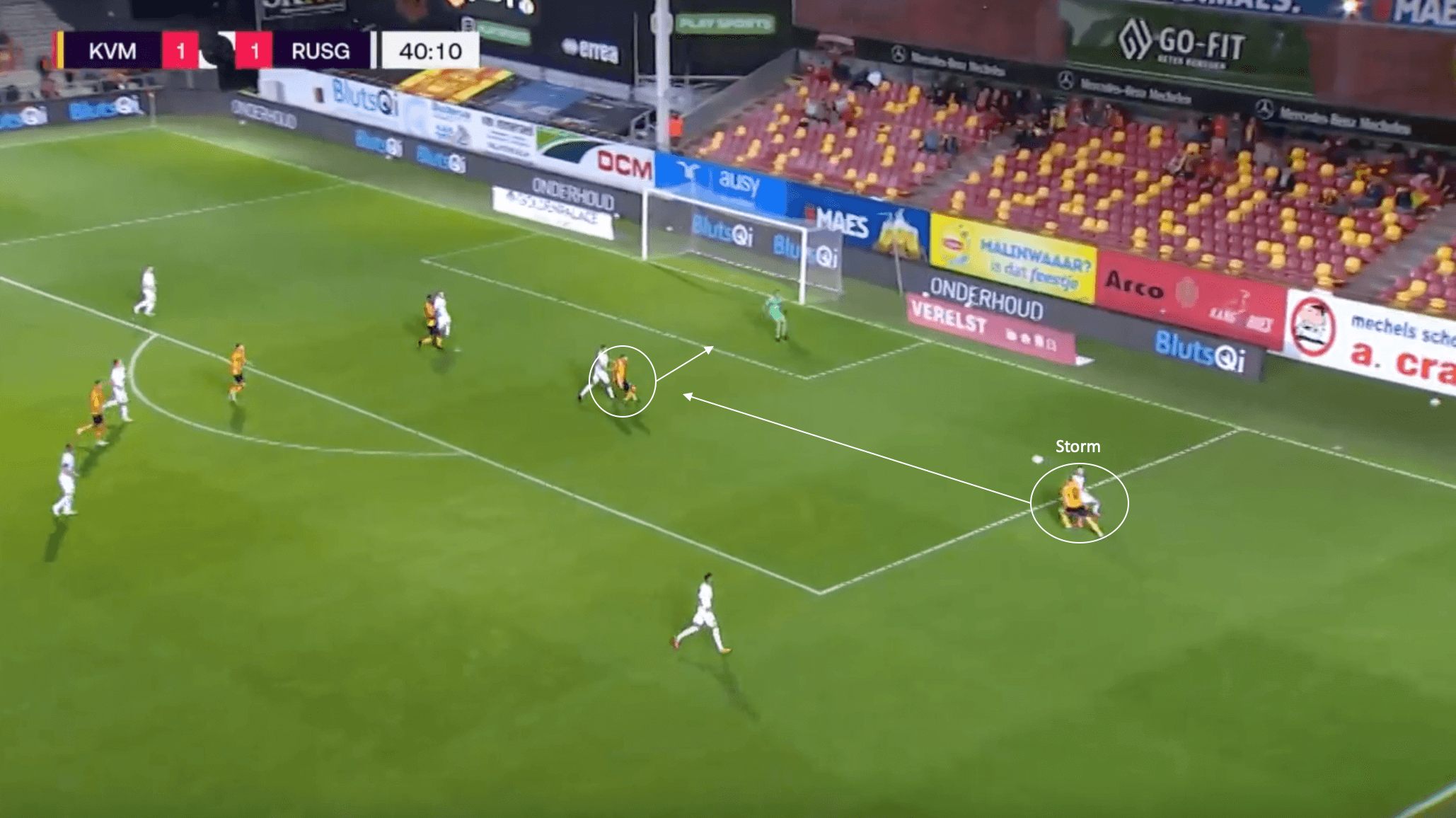
The phase of play above once again shows Storm’s close control and dribbling ability to forge a goalscoring opportunity out of almost nothing. A cross-field pass is played to Storm, who can take it down first-time before flicking it past the USG defender and running past him onto the ball. Unfortunately, Storm’s pass is played behind the attackers, allowing the USG defence to clear away the danger. Nikola Storm is lethal at chance creation, whether that is for himself or for others.
Movements off the ball
Another strength of Nikola Storm’s game that causes issues for opposing defences is his movements off the ball. Storm likes to make his runs wide beyond the opposition fullback, as opposed to making runs that cut inside. As illustrated earlier, Storm prefers to cut inside on his right from wide left positions, after making runs behind the opposition fullback from an initial wide position.
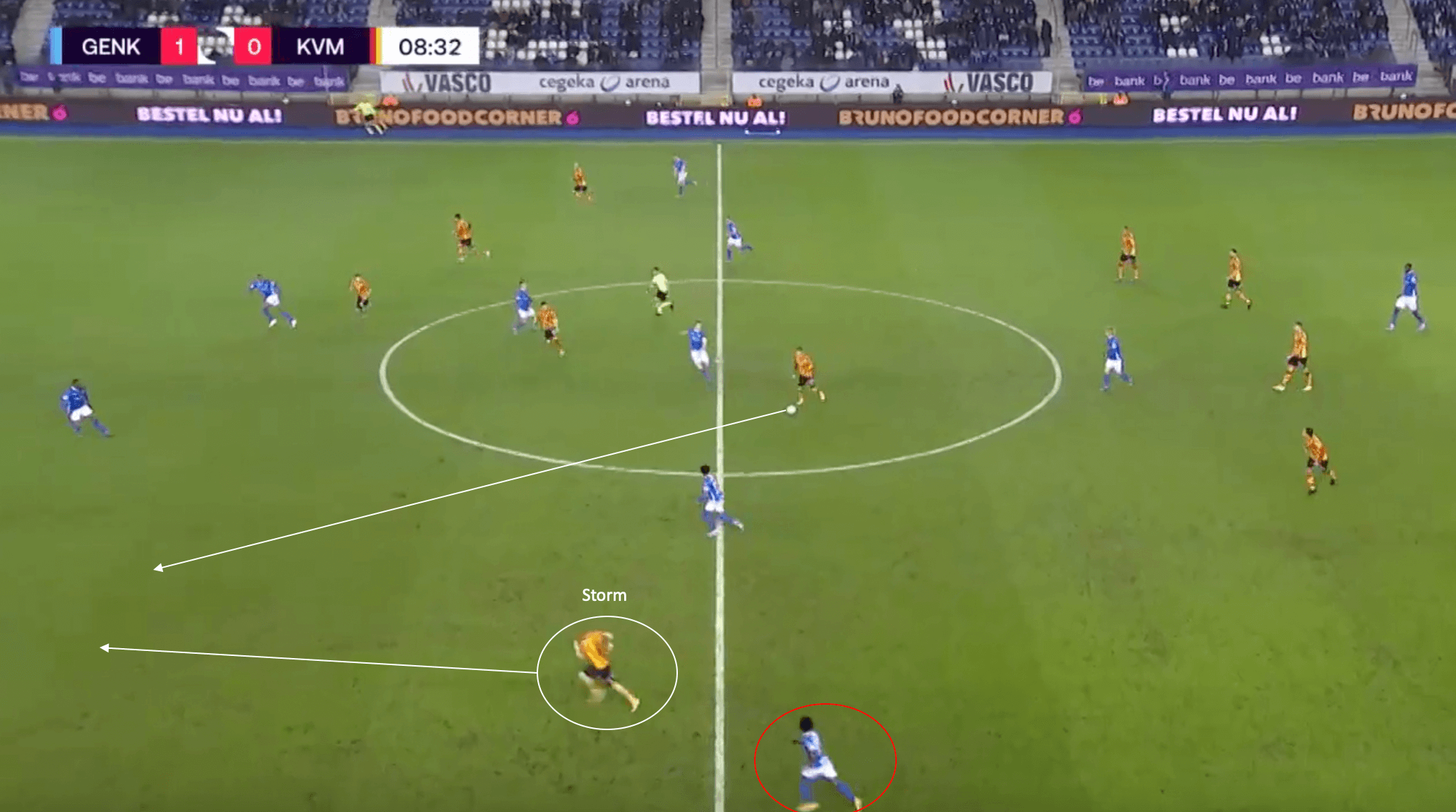
Mechelen’s phase of play above against Genk shows the prototypical runs that Nikola Storm looks to make. He is able to find space in behind the opposition fullback, as Ángelo Preciado is pushed high up the pitch and unable to get back quick enough to cover the space in behind. As a result, Storm runs into it, with his teammate playing a pass into the space to find his run.
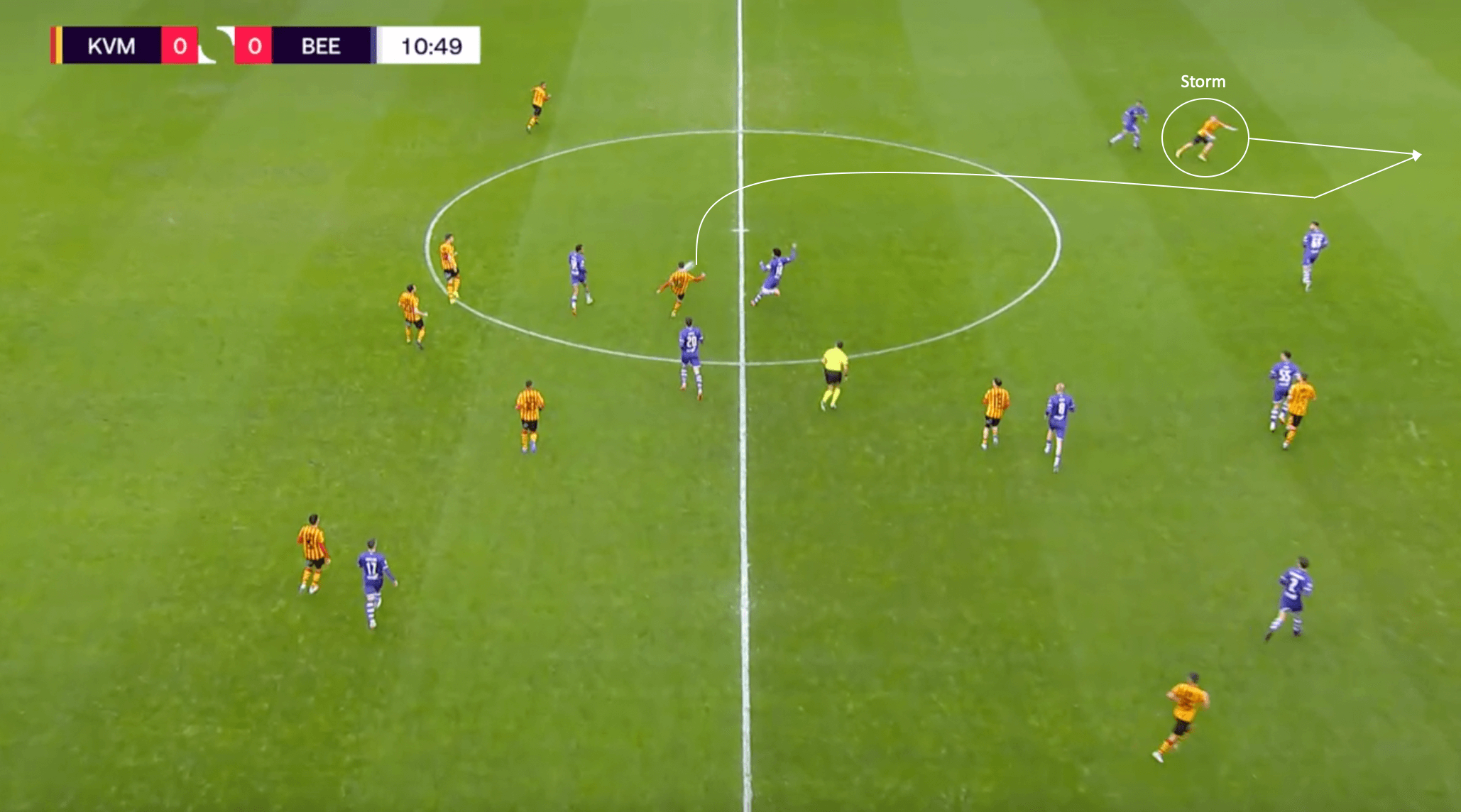
Here is another example of the types of runs that Storm can make. He once again is able to find himself behind the opposition fullback and in an onside position for the ball to be played to him. His teammate plays a perfect pass into the space behind and allows Storm to make a great run onto the ball. As a result, Storm can bear down on goal and score 1v1 against the goalkeeper, with him getting rewarded for his awareness.
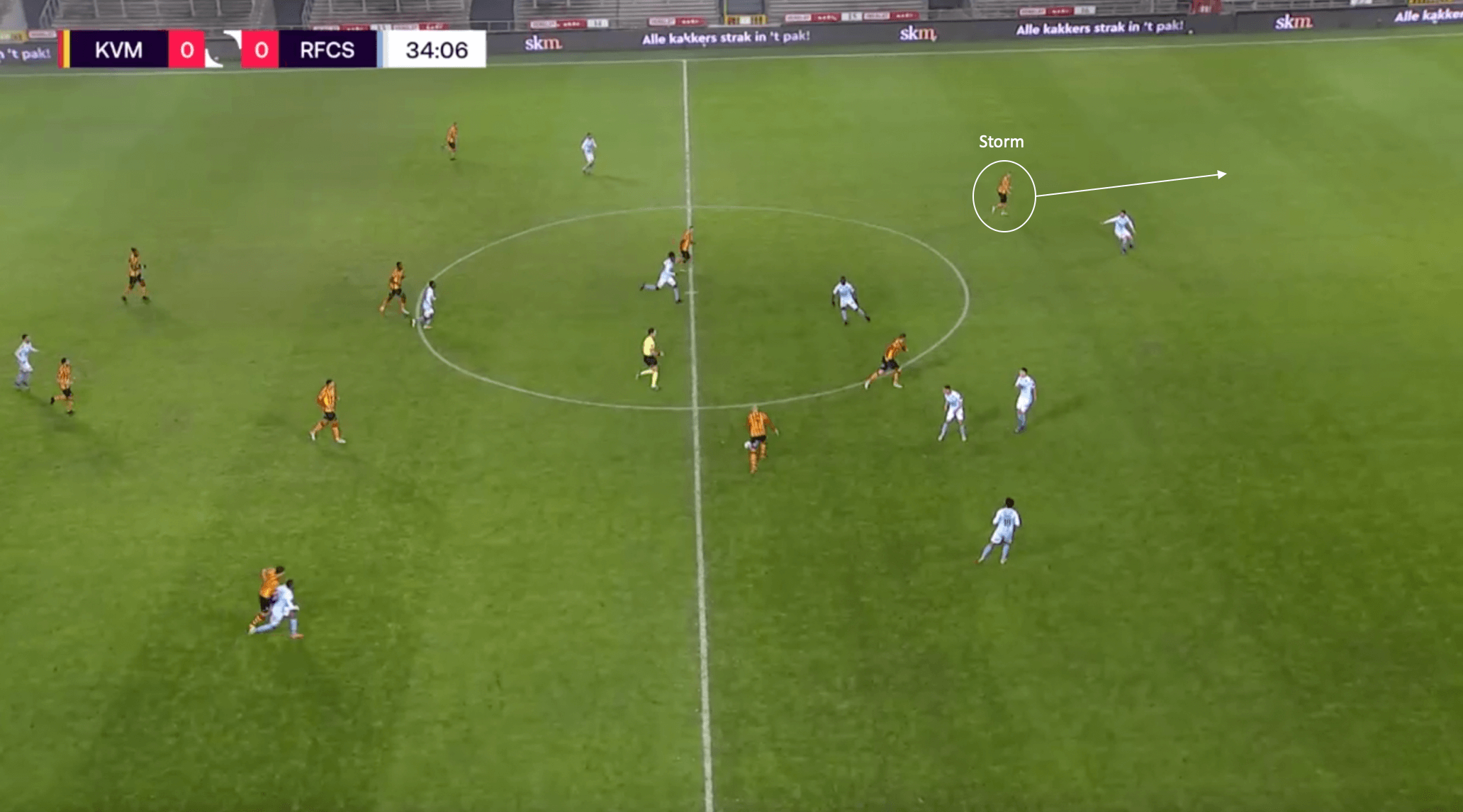
The above image shows another example of the kinds of off the ball runs that Storm normally makes. Once again, he is the furthest man forward for Mechelen and, with the fullback marking him caught ball watching, he makes a perfect run in behind the opposition defensive line. Under Vrancken’s tactics, Storm has become deadly at making these perfectly timed runs in behind, which is without a doubt one of the key reasons he has had a breakthrough season with his goals, assists, and chance creation.
Weakness in aerial duels
When looking at Nikola Storm’s style of play at face value, it is hard to find any weaknesses in his game. However, his presence in aerial duels would very much be his biggest weakness. Standing at 5’10” tall, Storm’s height should mean that he would be at least a threat when challenging for the ball aerially. In fact, the opposite is true, with Storm winning only 15% of his aerial duels attempted this season.
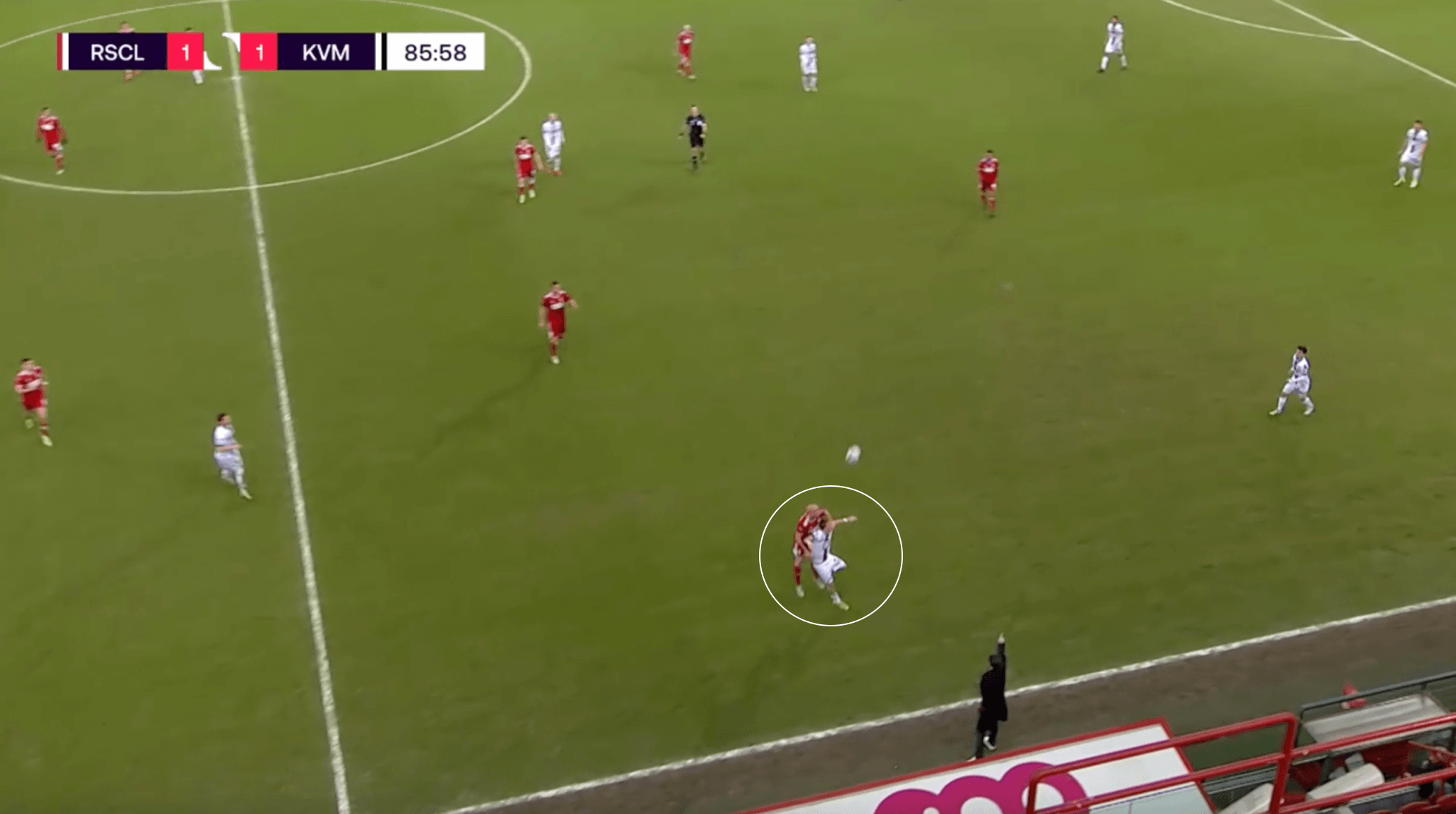
The phase of play above shows an example of this weakness in aerial duels from Storm. The ball is played towards Storm and his marker after a clearance from a Standard defender. Though Storm’s height means he should be more of a threat at aerial duels, he is not. Here, the Standard player is able to outmuscle and outjump Storm, climbing over him to easily win the header.
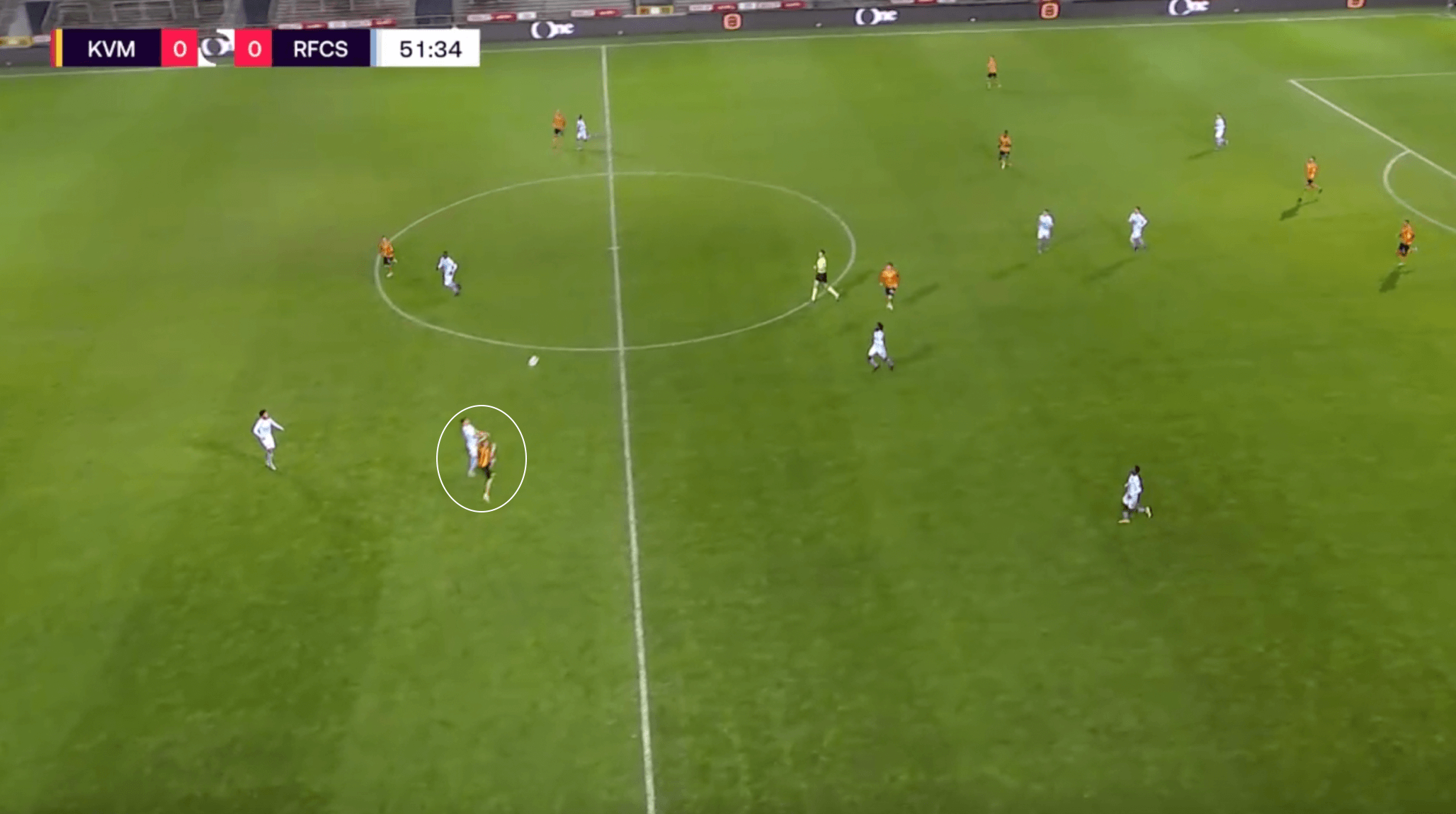
Again, the ball is played long from the R.F.C Seraing goalkeeper with Storm in a position to be able to challenge the defender in the air. This time, instead of being outmuscled while going up to challenge, Storm is late to jump, which allows him no chance of winning the ball. As a result, the ball gets headed back to a Seraing player, allowing them to keep possession and start another attacking sequence.
Conclusion
This analysis has shown the biggest strengths to Nikola Storm’s game, as well as a weakness that could be improved upon. While a call up to the Belgian national team could be possible due to his very good form, it is highly unlikely. Roberto Martínez already has many high-quality wide players as part of his squad, with the likes of Eden Hazard of Real Madrid and Yannick Carrasco of Atlético Madrid two of these. However, a move outside of Belgium may be possible, as clubs from bigger European leagues would be wise to take a look at Storm and the qualities he could bring to their club.

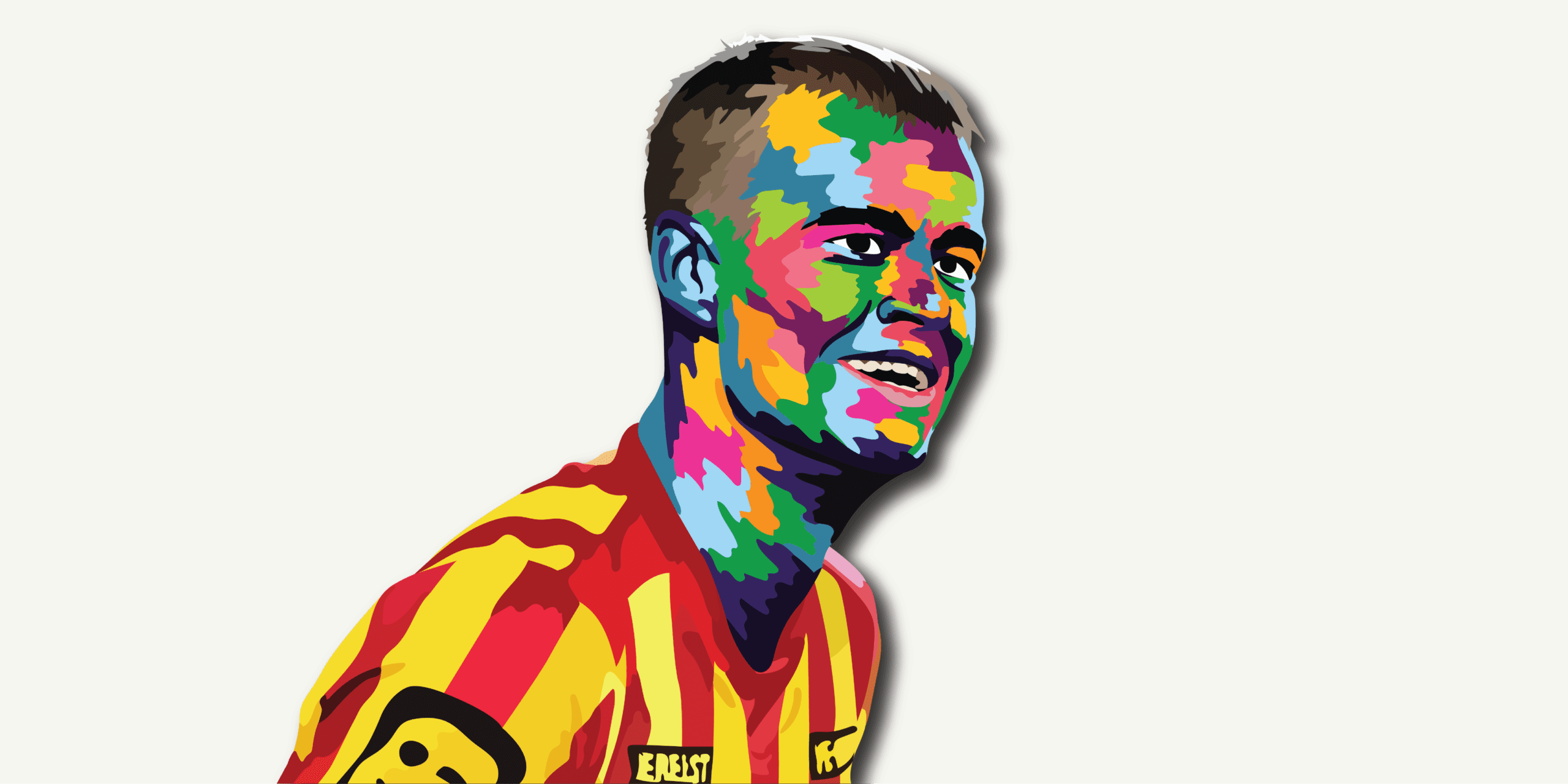
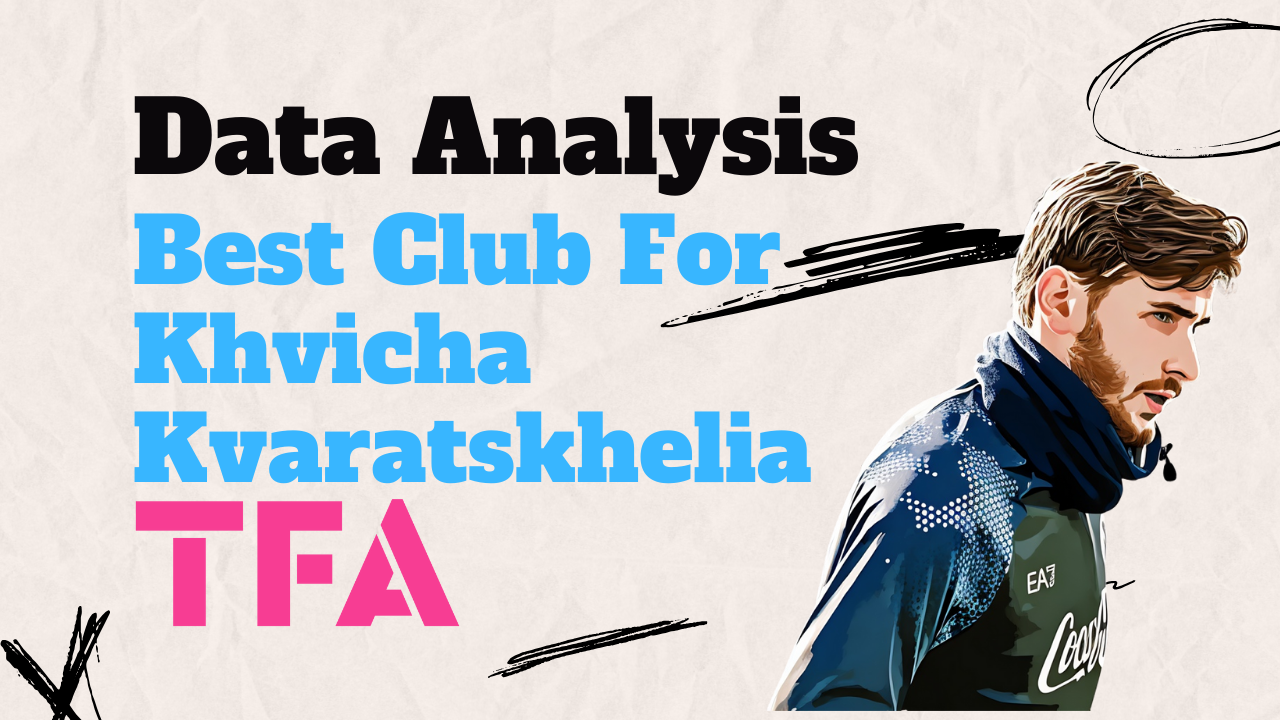
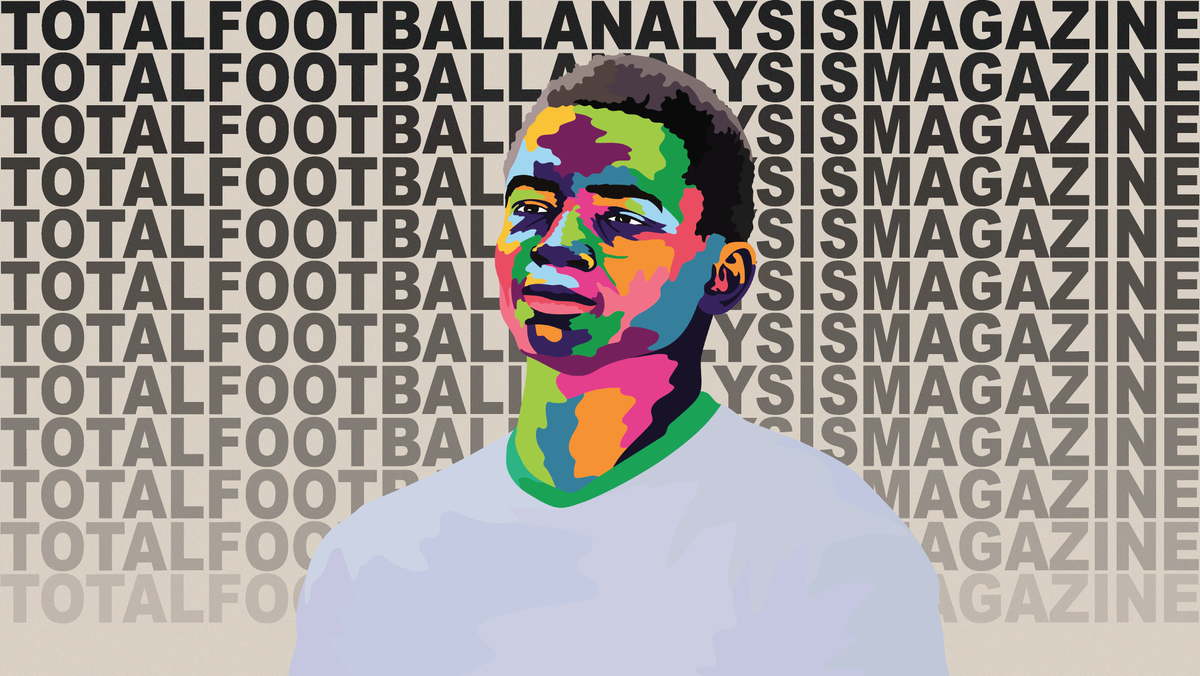

Comments